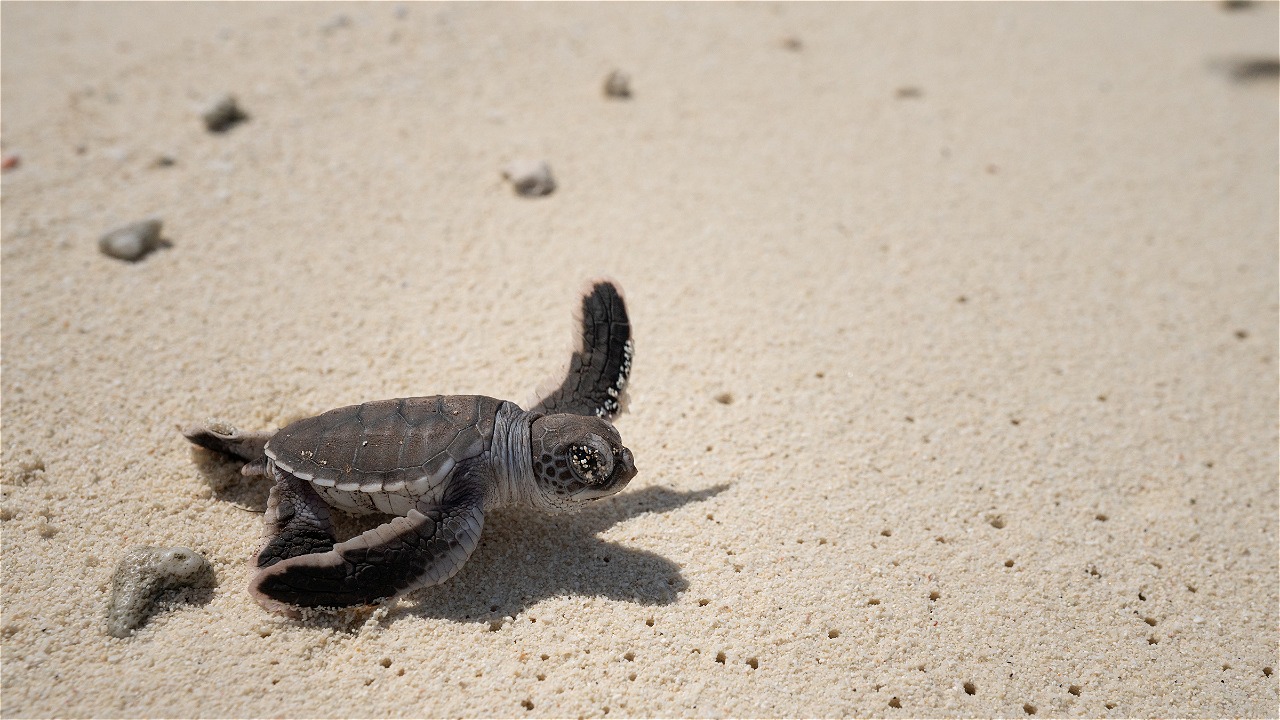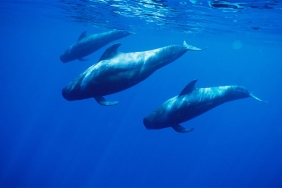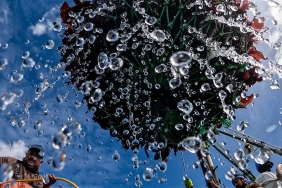SLICING OPEN A TURTLE'S STOMACH FOR ITS EGGS
By: Dwi Suprapti (Marine Species Conservation Coordinator, WWF-Indonesia)
Turtles are one of the ancient marine reptiles that still survive today. Based on the analysis of fossils found by anthropologists, it is known that turtles have occupied the Earth since the Triassic Period or more than 200 million years ago and have gone through an evolutionary process to be able to survive the natural conditions of the past to finally exist today.
Sea turtles have a long life cycle and a low survival rate. This animal only reaches adulthood around 30 - 50 years. Experts have observed that out of 1000 eggs that hatch into hatchlings (baby turtles), only 1 turtle is expected to live to adulthood and return to lay eggs. This results in very slow rejuvenation of sea turtles.
Although not many can grow to adulthood, the struggle of sea turtle life does not stop. An adult female turtle will lay hundreds of eggs so that her generation can continue. But unfortunately, the mother turtle who has struggled to live for more than 30 years to become an adult must be killed on the nesting beach because of humans who can't wait to take the eggs from her body.
These cases include Paloh, which is the longest sea turtle nesting beach in Indonesia and is highly favored by the Green Turtle (Chelonia mydas) for laying eggs. This beach, located on the tail of Borneo, has long been a target location for turtle egg poachers. In fact, data from WWF-Indonesia's 2012 publication shows that almost 100% of turtle eggs were poached throughout the year in the period before 2010. However, along with WWF-Indonesia's mentoring efforts to the community as well as routine monitoring activities throughout the day conducted for almost 8 years have paid off. At least, more than 70% of sea turtle nests have been successfully rescued and hatched into hatchlings.
However, it seems that the routine monitoring efforts carried out by WWF-Indonesia together with the Supervisory Community Group (Pokmaswas) have made turtle egg poachers less free to move. To shorten the time of egg collection, where they usually have to wait for the turtle's ritual process of laying eggs to reach 3 hours, a short way is taken by cutting the edge of the turtle's abdomen to then remove the oviduct and take the eggs by force.
This incident became known recently. At least within 1 week, 2 Green turtles were found stranded dead at Paloh Nesting Beach in a decomposed state with a split stomach. The first incident was found on September 14, 2017 at around 11 am. When the WWF-Indonesia observer team flew a drone to observe the damage to coastal vegetation due to the rampant clearing of coastal forest land in Paloh, a Green turtle was seen stranded dead and a channel resembling an intestine was seen sticking out of its body.
Upon hearing the report, WWF-Indonesia dispatched a Veterinarian and team to conduct forensics on September 16, 2017. The observation confirmed that there was indeed 1 Green turtle (Chelonia mydas) found dead stranded in a state of advanced decomposition (code 4) or estimated to have been dead for more than 5 days found on the north coast of Paloh towards Temajuk Village. This turtle was female and an adult turtle (estimated to be more than 30 years old) with a carapace length (PLK/ CCL) of 96 cm. Macroscopic examination showed signs of a sharp object wound on the lower left edge of the turtle's body (vulnus penetrosum at inframarginal scute sinister). This incision is suspected to be part of an attempt to force out the turtle's oviduct (oviduct) for eggs.
The second incident was on Friday, September 22, 2017, in the morning when the WWF-Indonesia monitoring team was about to conduct routine data collection of sea turtle nesting tracks, a female Green turtle measuring 73 and 64 cm in length and width of the carapace arch respectively was found dead with further decomposition (code 4) and there were traces of fishing line wrapped around her body. At the time of observation, this turtle also had an incision wound on the lower right edge of the body (Vulnus penetrosum at inframarginal scute dexter). It is suspected that this was part of a forced attempt to extract eggs from the turtle. Although the size of the turtle indicates that it is not yet mature and not yet time to lay eggs.
So this is suspected that the turtle is an almost mature turtle that is migrating in the waters of Paloh but is caught by fishing lines accidentally by fishers around Paloh beach, then the turtle's body is cut to look for eggs. Unfortunately, this turtle was immature so the eggs were not found, so the condition of the turtle when found was still intact unlike the previous incident where the oviduct had been removed from its body.
Thus, the two cases above are a form of physical violence against sea turtles in a planned manner by injuring and cutting the lower edge of the turtle's body (Inframarginal scutes) in an effort to forcefully remove the turtle's eggs from its body. Of course, this is tragic and part of a protected wildlife crime and similar incidents must be prevented so that turtles who have actually survived to adulthood against the harshness of life and challenges in the ocean must die in an instant due to irresponsible human actions just to get their eggs in a short time.
Of course, this must receive serious attention from the management authority and law enforcement officials to jointly supervise and manage sea turtle conservation in Indonesia, especially in Paloh, where the strategic location of Paloh and direct neighbors with Malaysia, which has a high selling price of sea turtle eggs compared to local trade, causing enthusiasts to hunt sea turtle eggs to continue to this day given its high economic value.





